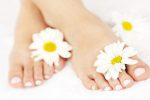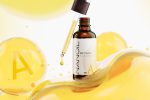How to treat adult acne? My ways of dealing with it

Adult acne displays the same symptoms as teen acne, yet it develops in adulthood. This type of acne should be treated under a dermatologist supervision, but when it touches women, it requires a gynaecological consultation as well; in this case, hormonal changes are frequently the aftermath of leading a stressful life. What’s important, pharmacological means give significantly more chances to cure adult acne than procedures carried out in beauty parlours; including home remedies. However, before you find out the answer on how to treat adult acne, learn its symptoms.
Adult acne – symptoms
Adult acne reveals itself by inflammations affecting chin, jawline and the lower part of cheeks. Its causes are:
- excessive sebum production,
- comedones and inflammation appearance,
- anaerobic bacteria presence which feed on sebum,
- improper keratinizing of hair follicles outlets, where the sebum goes out from.
Adult acne is often located on chin and spreads along the jawline. When it comes to chin, it happens to be chronically reddened. This problem touches more women than men and significantly decreases the quality of patients’ life.
Again, the problem of adult acne mainly concerns women who try to combine active career pursuing with successful family life, including children upbringing. Its causes haven’t been yet explained, but it was noticed that adult acne usually touches women who have stopped taking birth control pills or who started taking them at young age. Moreover, this problem is encouraged by:
- stressful lifestyle,
- irregular food consumption, especially diet based on processed food products,
- failing to get enough sleep regularly,
- chronic fatigue,
- application of ill-matched cosmetics,
- frequent presence in air-conditioned rooms,
- cigarette smoking.
Leading unhealthy lifestyle may cause hormonal disorders of thyroid gland, pharyngeal hypophysis and ovaries as well as obesity and insulin resistance that influence sebaceous glands work and condition acne appearance.
Adults affected by acne suffer from psychical discomfort because their looks translates into the social, family and working life. For that reason their self-esteem is lowered to such a degree that they are gradually backing out from all spheres of life.
How to treat adult acne? My methods
Mature patients, who visit a dermatologists because of acne, are mainly women who have given a try to all possible anti-acne cosmetics and are disappointed about the lack of positive outcomes. They expect a specialist to take the proper steps which will produce immediate results. Yet, they forget that their skin, tired of being exposed to ill-matching and overused products, is already irritated and overdried, and abounds with inflammations. To make the matter even worse, such patients have the tendency to hide the skin imperfections using high-camouflage foundations and powders which additionally block the outlets of sebaceous glands and intensify skin inflammations even more. All of this makes the problem even more serious and leads to so-called acne cosmetica.
Adult acne is treated similarly to teen acne, yet in this case anti-acne medications are introduced way faster (antibiotics, isotretinoin, and hormonal therapy), whereas local treatment is limited. This procedure’s aim is to reduce the risk of irritations of already reddened chin and cheeks. Moreover, irritation and adult skin dehydration can be also caused by strong exfoliating products which, for that very reason, should be replaced with moisturising preparations. I recommend you application of gently cleansing preparations, non-comedogenic moisturising creams that don’t clog sebaceous glands outlets as well as mediations delivering anti-inflammatory, anti-bacterial action that regulate work of sebaceous glands. The very properties are displayed, for example, by azelaic acid that doesn’t deliver skin exfoliating action, luckily.
Azelaic acid belong to over the counter medications. It’s available in the form of creams or gels. To its benefits we include:
- antiseborrheic and anti-inflammatory action,
- bacteriostatic action (affects aerobic bacteria and anaerobic bacteria),
- natural origins.
Furthermore, azelaic acid doesn’t contain any intensively working substances nor it causes intensive skin exfoliation. At the beginning of the treatment you might feel delicate prickling, yet skin is fast to get used to it. It’s also worth pointing out that azelaic acid displays lightening up action and slows down discolouration appearance. It’s worth applying the acid during retinol combination therapy.
In order to help your skin regenerate faster, you can give a try to scrubs containing pyruvic acid, mandelic acid or glycolic acid, yet you shouldn’t expose your skin to such treatments more often than once every 3-4 weeks. Microdermabrasion is also recognized as fairly useful.
Are you, or have you been suffering from adult acne? If so, how did you manage to combat it? Leave your comments below!





Leave a Reply